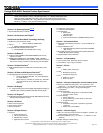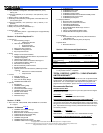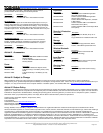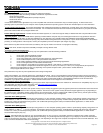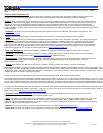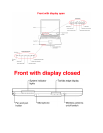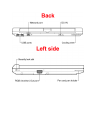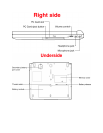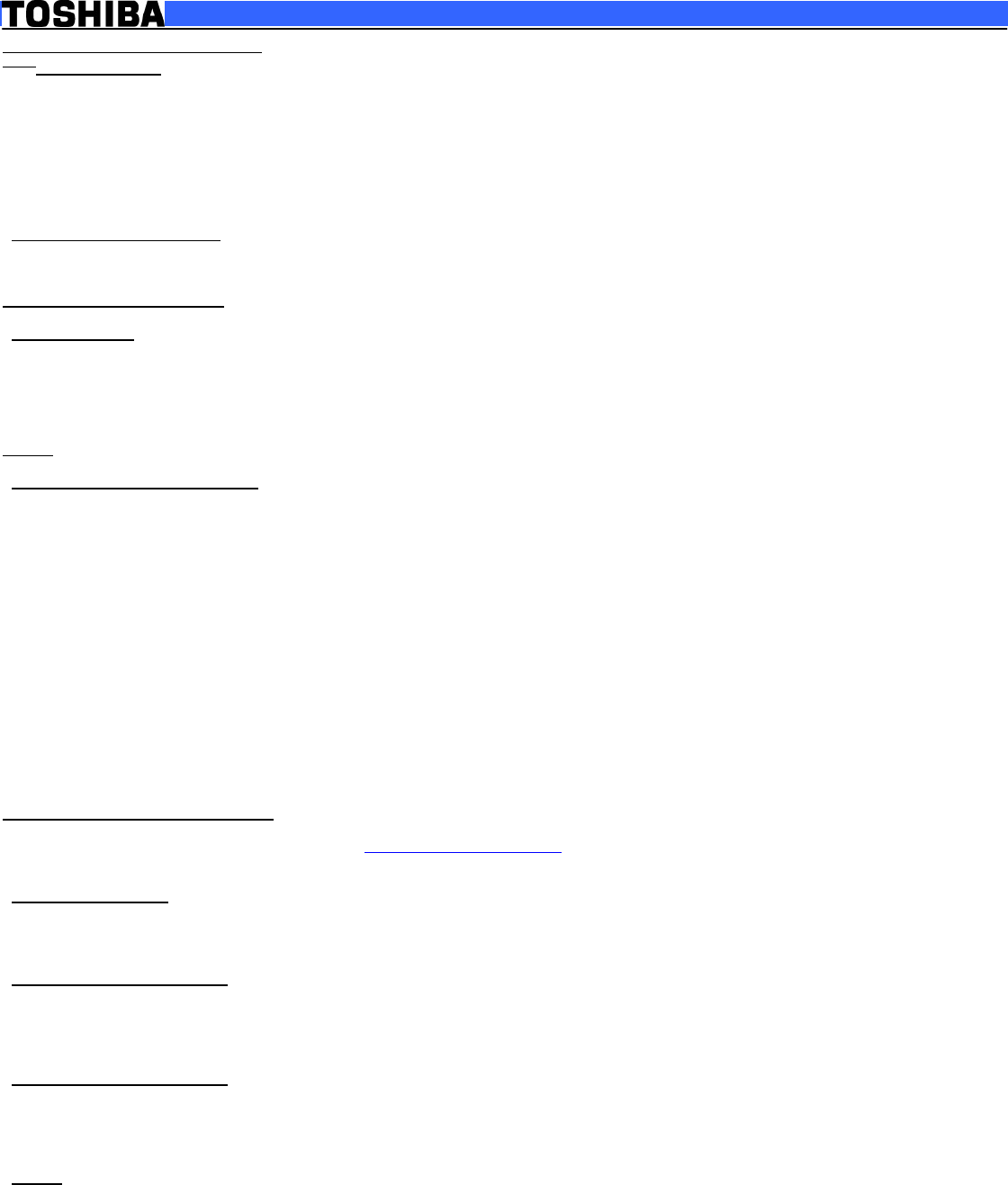
© Copyright 2005 – 2006 Toshiba America Information Systems Inc. All Rights reserved.
TAIS shall not be liable for damages of any kind for use of this information, which is subject to change without notice.
Portégé R400-S4931 BTS Rev. 1.01 2006-12-15 cm/sk T20061025 CB1.00 Page 4 of 5
CPU_64
64-bit computing:
64-bit processors are designed to take advantage of 32 and 64 bit computing.
64-bit computing requires that the following hardware and software requirements are met:
- 64-bit Operating System
- 64-bit CPU, Chipset and BIOS (Basic Input/Output System)
- 64-bit Device drivers
- 64-bit applications
Certain device drivers and/or applications may not be compatible with a 64-bit CPU and therefore may not function properly. A 32-bit version of the
operating system is preinstalled on your computer unless explicitly stated that the operating system is 64-bit. See "Detailed Specs" for more information.
1
Product Series Legal Footnote. The product specifications and configuration information are designed for a product Series. Your particular model may
not have all the features and specifications listed or illustrated. For more detailed information about the features and specifications on your particular model,
please visit Toshiba's Web site at pcsupport.toshiba.com.
Product Offering Legal Footnote. Toshiba America Information Systems, Inc. reserves the right to modify or withdraw this offer at anytime without notice.
2
Operating System. Certain Microsoft® software product(s) included with this computer may use technological measures for copy protection. IN SUCH
EVENT, YOU WILL NOT BE ABLE TO USE THE PRODUCT IF YOU DO NOT FULLY COMPLY WITH THE PRODUCT ACTIVATION PROCEDURES.
Product activation procedures and Microsoft’s privacy policy will be detailed during initial launch of the product, or upon certain reinstallations of the software
product(s) or reconfigurations of the computer, and may be completed by Internet or telephone (toll charges may apply).
Some software may differ from its retail version (if available), and may not include user manuals or all program functionality.
Offers. Offer terms, duration and product availability all subject to change without notice
3
Processor (Central Processing Unit).
CPU performance in your computer product may vary from specifications under the following conditions:
1. use of certain external peripheral products
2. use of battery power instead of AC power
3. use of certain multimedia, computer generated graphics or video applications
4. use of standard telephone lines or low speed network connections
5. use of complex modeling software, such as high end computer aided design applications
6. use of several applications or functionalities simultaneously
7. use of computer in areas with low air pressure (high altitude >1,000 meters or >3,280 feet above sea level)
8. use of computer at temperatures outside the range of 5°C to 30°C (41°F to 86° F) or >25°C (77°F) at high altitude (all temperature
references are approximate and may vary depending on the specific computer model – please visit the Toshiba website at
www.pcsupport.toshiba.com for details).
CPU performance may also vary from specifications due to design configuration.
Under some conditions, your computer product may automatically shut-down. This is a normal protective feature designed to reduce the risk of lost data or
damage to the product when used outside recommended conditions. To avoid risk of lost data, always make back-up copies of data by periodically storing it
on an external storage medium. Use your computer product only under recommended conditions. Read additional restrictions under “Environmental
Conditions” in your product “Detailed Specs.” Contact Toshiba Technical Service and Support for more information.
Core™ 2 Duo or Core™ Duo Processor.
Intel® Dual Core Technology is a new technology designed to deliver improved performance to the notebook PC. Performance or compatibility may vary. For
more information on Intel's Core 2 Duo processors, visit:
http://www.intel.com/core2duo/
See 64-Bit Computing Legal Footnote, if applicable.
4
Memory (Main System). Part of the main system memory may be used by the graphics system for graphics performance and therefore reduce the amount
of main system memory available for other computing activities. The amount of main system memory allocated to support graphics may vary depending on
the graphics system, applications utilized, system memory size and other factors. For PC's configured with 4 GB of system memory, the full system memory
space for computing activities will be considerably less and will vary by model and system configuration.
5
Hard Disk Drive (HDD) Capacity.
1 Gigabyte (GB) means 10
9
= 1,000,000,000 bytes using powers of 10. The computer operating system, however, reports storage capacity using powers of 2
for the definition of 1 GB = 2
30
= 1,073,741,824 bytes, and therefore shows less storage capacity. Available storage capacity will also be less if the product
includes one or more pre-installed operating systems, such as Microsoft Operating System and/or pre-installed software applications, or media content.
Actual formatted capacity may vary.
6
Hard Disk Drive (HDD) Capacity.
1 Gigabyte (GB) means 10
9
= 1,000,000,000 bytes using powers of 10. The computer operating system, however, reports storage capacity using powers of 2
for the definition of 1 GB = 2
30
= 1,073,741,824 bytes, and therefore shows less storage capacity. Available storage capacity will also be less if the product
includes one or more pre-installed operating systems, such as Microsoft Operating System and/or pre-installed software applications, or media content.
Actual formatted capacity may vary.
7
Display. Small bright dots may appear on your screen display when you turn on your PC. Your display contains an extremely large number of thin-film
transistors (TFT) and is manufactured using high-precision technology. Any small bright dots that may appear on your display are an intrinsic characteristic
of the TFT manufacturing technology. Over a period of time, and depending on the usage of the computer, the brightness of the screen will deteriorate. This
is also an intrinsic characteristic of the screen technology.



